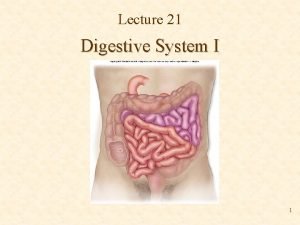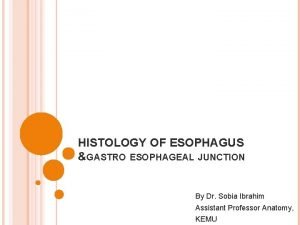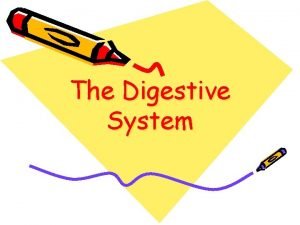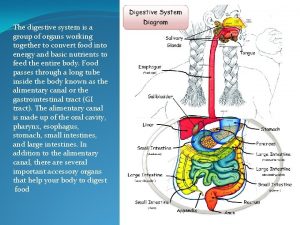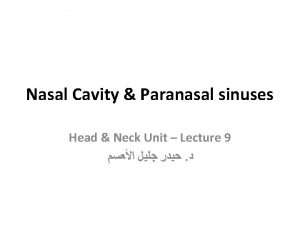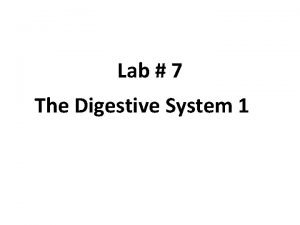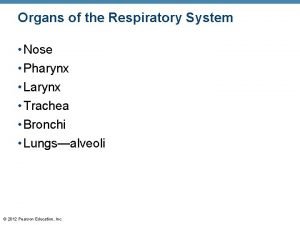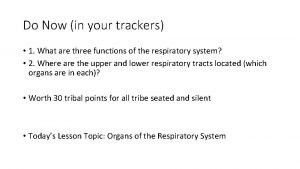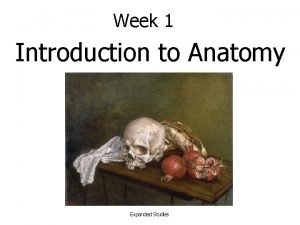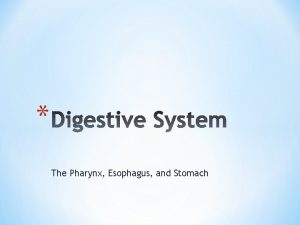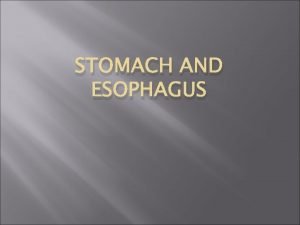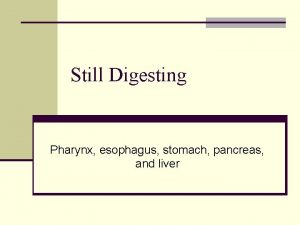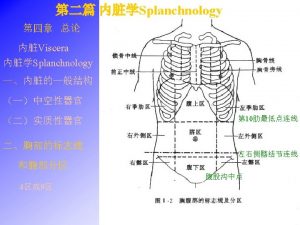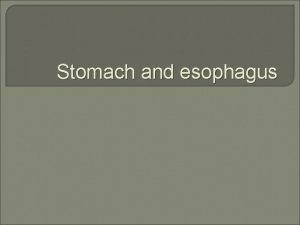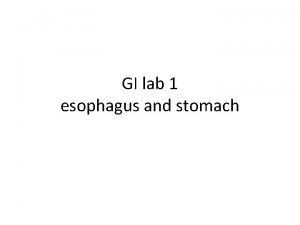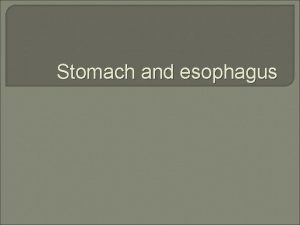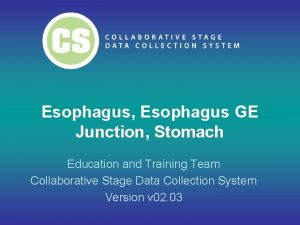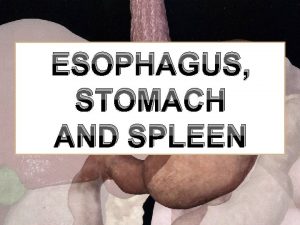The Pharynx Esophagus and Stomach Posterior to nasal











- Slides: 11

* The Pharynx, Esophagus, and Stomach

*Posterior to nasal cavities, mouth, and larynx *Allows food and drink into the esophagus *Helps to deliver air to the trachea *Allows for an equalization of air pressure on the eardrum *


*hollow tube posterior to trachea and anterior to spine *About 10” long *

*layers of muscle that contract in circular and lengthwise motions powerful wavelike movement called peristalsis *Peristalsis moves food from the throat to the stomach in about 10 seconds *allows food to be moved even when we are upside down *Peristalsis Video *

* flap of cartilage which is depressed during swallowing to cover the opening of the trachea *Epiglottis Video *


*Hollow muscular organ left side of upper abdomen *receives food from the esophagus via a muscular valve called the lower esophageal sphincter *Ridges in muscle tissue called rugae- allow expansion Rugae of Stomach *pyloric sphincter opens to allow food to pass from the stomach to the small intestine

*Swallowed food comes into contact with acidic gastric juice *Gastric juice= hydrochloric acid (p. H 1 -2) + enzyme pepsin (breaks down proteins) *Mucus lining protects stomach from acid *Muscles of the stomach wall move food to increase the contact between the food and the gastric juice *Becomes chyme- liquefied food *Stomach pushes chyme through the pyloric sphincter into the small intestine


*Study the movements that are associated with swallowing. Slowly sip a glass of water and note the direction of the water’s movement. Place a stethoscope over the left surface of the abdomen, about where the rib margin is. This should be where the esophagus enters the stomach. Swallow another sip and listen for the sound of water as it enters the stomach. Now gently place your hand over your larynx and swallow another sip of water. Note the movement of the larynx. Swallow another sip of water and see if you can prevent the larynx from moving while you swallow. *
 Pharynx and oral cavity
Pharynx and oral cavity Esophageal gastric junction histology
Esophageal gastric junction histology Human stomach anatomy
Human stomach anatomy Digestive system for labelling
Digestive system for labelling Esophagus stomach small intestine large intestine
Esophagus stomach small intestine large intestine Posterior nares of nose
Posterior nares of nose Posterior nasal aperture
Posterior nasal aperture Posterior nasal nerve
Posterior nasal nerve Spongy retroperitoneal organ posterior to the stomach
Spongy retroperitoneal organ posterior to the stomach Pharynx and larynx and trachea
Pharynx and larynx and trachea Pharynx and larynx and trachea
Pharynx and larynx and trachea Cural
Cural
